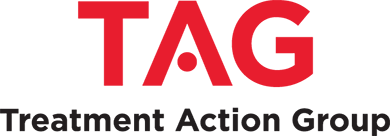By Tim Horn
The way I see it, you can go down in history as the poster boy for greedy drug-company executives, or you can change the system—yeah, you.
—U.S. Representative Elijah E. Cummings (D-MD)
With these words, directed at execrated former Turing Pharmaceuticals CEO Martin Shkreli at a House Oversight and Government Reform Committee hearing on Capitol Hill this February, ranking member Elijah E. Cummings drew attention to a serious culpability problem that continues to dominate public discourse on the egregious pricing of prescription drugs in this country. The hearing was political theater at its most compelling, and Shkreli, smug, snide, and intransigent in his refusal to answer questions from committee members, was ideally cast in the role of villain. But to suggest that Shkreli and other pharmaceutical executives bear the sole responsibility for actually changing the system—a hodgepodge of laws, regulations, and loopholes underscoring health care as a commodity and unregulated profits as a free-market right of the prescription drug industry—misses the mark entirely.
We begin this issue of TAGline with “Greed and the Necessity for Regulation,” in which Erica Lessem, Kenyon Farrow, and I review the need for increased statutory and regulatory oversight to mitigate what can only be described as an epidemic in domestic drug pricing. In the wake of unsubstantiated launch prices set for Gilead’s hepatitis C treatments Sovaldi and Harvoni, Turing’s 5,000 percent markup of the decades-old drug Daraprim for toxoplasmosis, and other recent egregious examples—all resulting in significant access barriers—a growing number of statutory and regulatory proposals have been put forth by federal and state elected officials and presidential candidates. Some strategies are revolutionary, others are more conservative, and all steer clear of the stringent price-control measures in place in other high-income countries.
In “PrEP Pricing Problems,” James Krellenstein and Jeremiah Johnson explore several challenges associated with the high cost of Truvada as pre-exposure prophylaxis. These include known and anticipated access difficulties tied to high out-of-pocket costs and public-payer barriers, along with weaknesses in Gilead Sciences’ assistance programs, not to mention the gall of maintaining a premium price for an FDA approval that was made possible only through a patchwork of federally funded clinical trials.
Finally, Tracy Swan interviews the University of Liverpool’s Andrew Hill about his group’s work exploring what it actually costs to profitably mass-produce generic drugs for HIV, viral hepatitis, and cancer. The resulting calculations have become a cornerstone of advocacy efforts in low-, middle-, and high-income countries, where there is now increasing pressure on the pharmaceutical industry to address the discrepancy between the price of drugs and what it costs to produce them.
Not touched upon in this TAGline is an issue directly related to efforts to control drug pricing and expenditures: the dire need for cost savings to be reinvested in the systems of HIV, hepatitis C, and TB prevention and care already stretched to the brink. Despite ambitious global strategies to end these epidemics, too little new money is being earmarked to improve diagnosis rates, engagement in care, and vital community infrastructure. Instead, the repurposing of existing funds for ambitious health initiatives—the National HIV/AIDS Strategy for 2020 notwithstanding—is often the financing tactic of choice. While advocates continue to push for expanded commitments from funders, we must also work to ensure that every dollar saved through drug cost containment efforts is earmarked for the betterment of public health.
